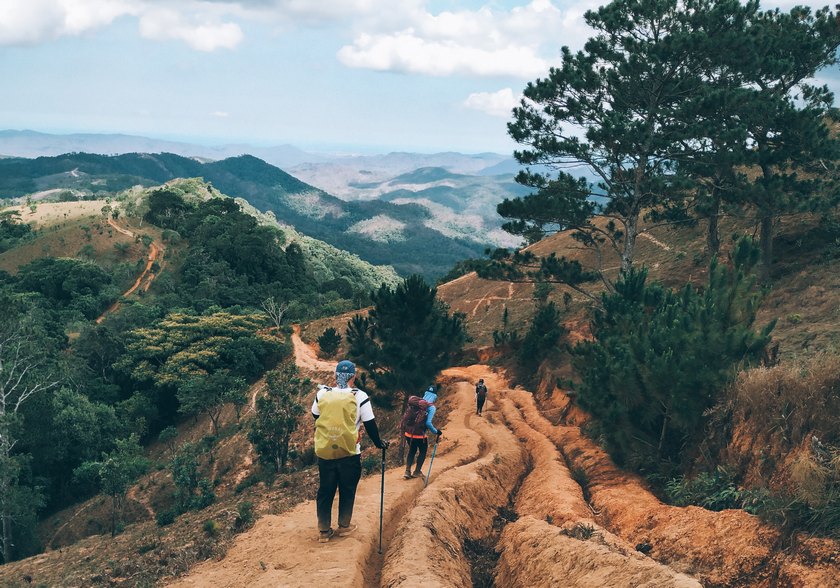Essential Hiking Safety Gear for Every Adventure
Going on a hiking adventure is a thrilling way to escape from daily life, connect with nature, and challenge your physical abilities. However, this exciting experience can be unpredictable, making safety a priority during any hiking excursion. One of the best ways to ensure a safe and enjoyable hike is to carry the right safety gear. In this article, we’ll outline the essential safety gear you should always take along to prepare for unexpected challenges on the trails:
1. Navigation Tools
Knowing your location and direction is crucial when hiking. Therefore, it’s essential to be equipped with navigation tools before starting your journey. A reliable map and compass should be part of your essential gear, in addition to using GPS devices or smartphone apps. Familiarizing yourself with the trail map before setting off is important, as well as carrying these tools to avoid getting lost, especially in unfamiliar terrain. Remember, technology can fail; traditional navigation tools might be lifesavers in challenging situations.
2. First Aid Kit
Accidents can occur at any moment during your hiking expedition. Consequently, being prepared with a well-stocked first aid kit is vital for dealing with emergency injuries on the trail. Your kit should include:
- Bandages
- Antiseptic wipes
- Adhesive tape
- Pain relievers
- Blister treatment
- Any personal medications
Additionally, it’s crucial to know the contents of your first aid kit and ensure it aligns with your specific needs and the challenges of your chosen terrain.

In emergencies, having a reliable means of communication is also necessary to seek help. So, carry a fully charged mobile phone, but keep in mind that signal strength may be weak in remote areas. Consider investing in a good satellite communication phone tailored for hiking for more reliable coverage, enabling you to call for help even in low-signal areas.
3. Emergency Shelter
Weather conditions can change rapidly, making it essential to have an emergency shelter for protection against unexpected rain, snow, or extreme temperatures. A lightweight emergency shelter, such as a compact tent or space blanket, is crucial, especially for longer hikes or in case you need to spend the night outdoors unexpectedly.
4. Illumination
Even if you plan to finish your hike before sunset, carrying illumination tools like a headlamp or flashlight is wise. Unforeseen circumstances can delay your return. In case your hike takes longer than expected, a reliable light source will assist you in navigating the trail in the dark. Ensure your illumination devices have fresh batteries and consider bringing spares for visibility in low-light conditions, aiding navigation and preventing accidents.

5. Multi-Tool or Knife
A versatile multi-tool, like a Swiss Army knife, or a sturdy knife can be invaluable in various situations, from cutting rope to preparing food. Ideally, choose a compact, lightweight option that won’t add bulk to your backpack but is capable of handling essential tasks.
6. Fire-Starting Equipment
Fire can be a lifesaver in survival situations during your hiking excursions. Thus, carry waterproof matches, a lighter, or fire starter sticks to ensure you can create a fire in challenging conditions. This equipment not only helps keep you warm but also enables you to cook food or signal for help in emergencies. Be sure to understand local regulations regarding setting up campfires at your hiking destination.
7. Extra Clothing and Rain Gear
Rapidly changing weather conditions necessitate dressing in layers that can be added or removed depending on temperature variations. A waterproof and windproof jacket is essential for protection against the elements. Moisture-wicking clothing helps keep you dry and comfortable. Furthermore, wearing the right footwear is necessary to prevent injuries and enhance your hiking experience. Invest in sturdy, comfortable hiking boots that provide ankle support and a good grip on diverse terrains. Ill-fitting shoes can lead to blisters and discomfort; thus, choosing your footwear wisely is crucial.
Conclusion
While hiking offers a fantastic opportunity to connect with nature and enjoy the great outdoors, prioritizing safety should always be your top concern. Whether you’re a seasoned hiker or just starting, investing in the right equipment and familiarizing yourself with its use can significantly impact your hiking experience. Remember, being prepared is not just a precaution—it’s your responsibility as a hiker to ensure you have fun while staying safe. Gear up, stay informed, and make the most of your time on the trails safely.
What kind of safety gear do you carry when you’re hiking? Feel free to share any tips or advice below!





